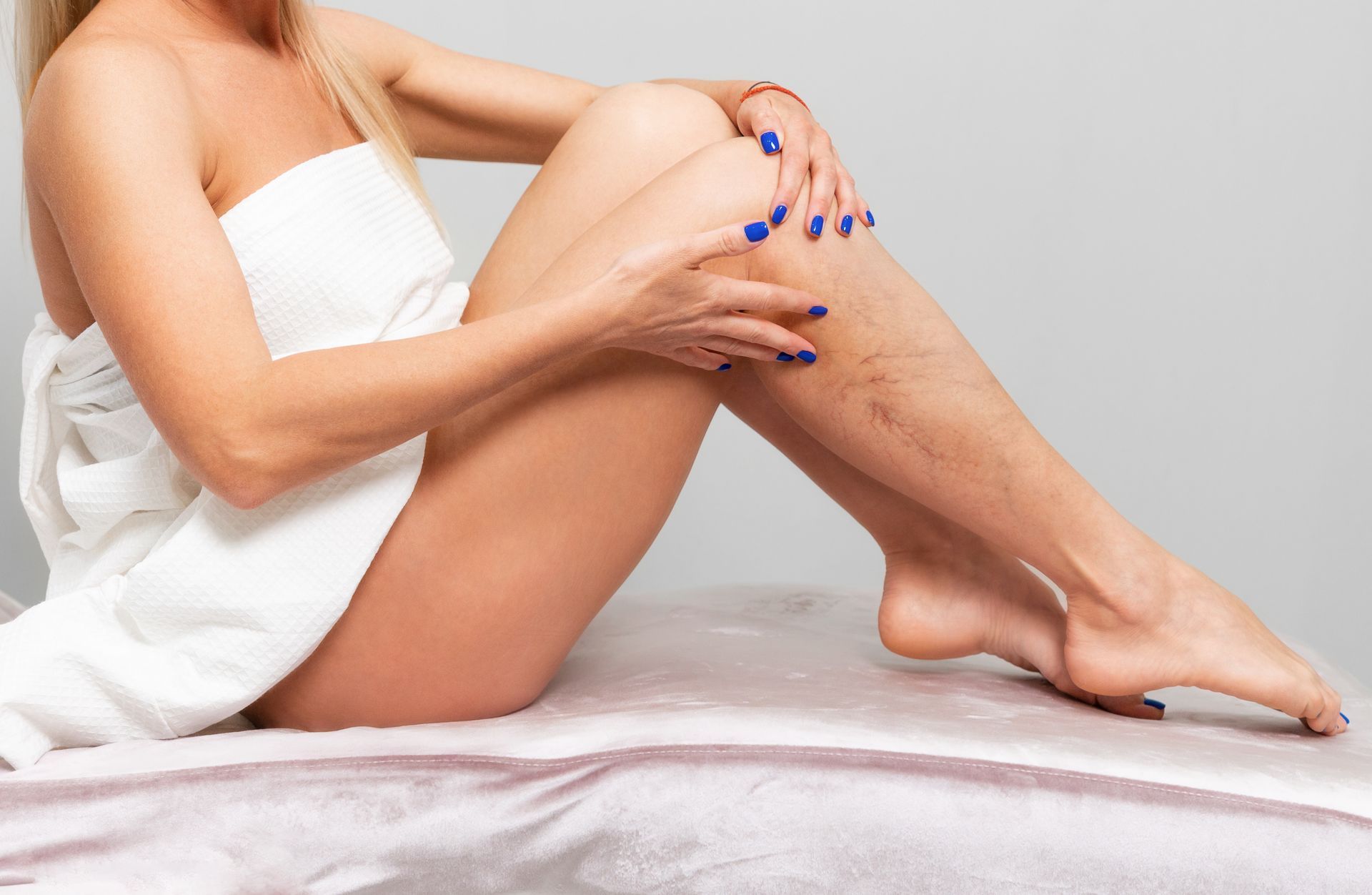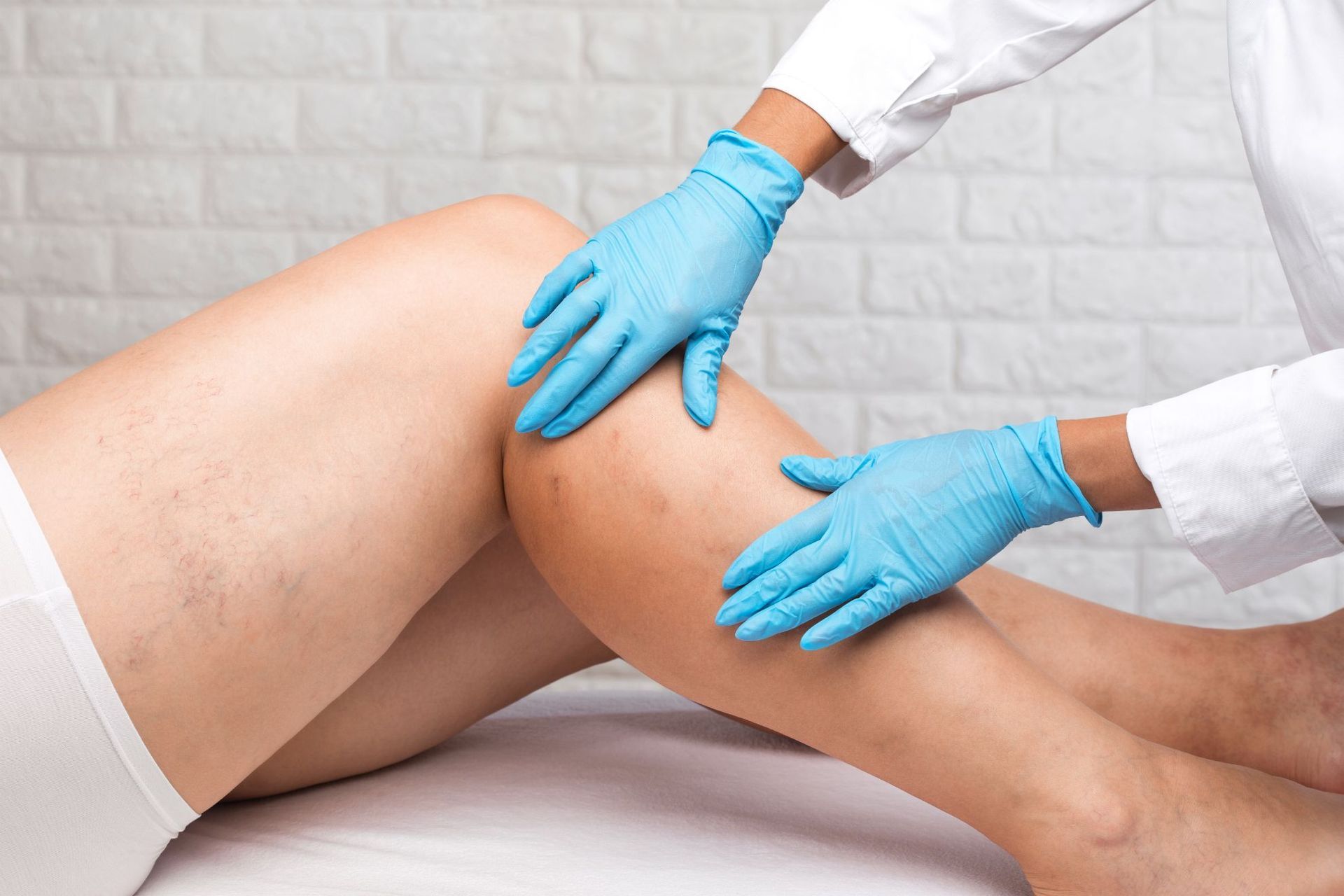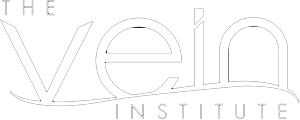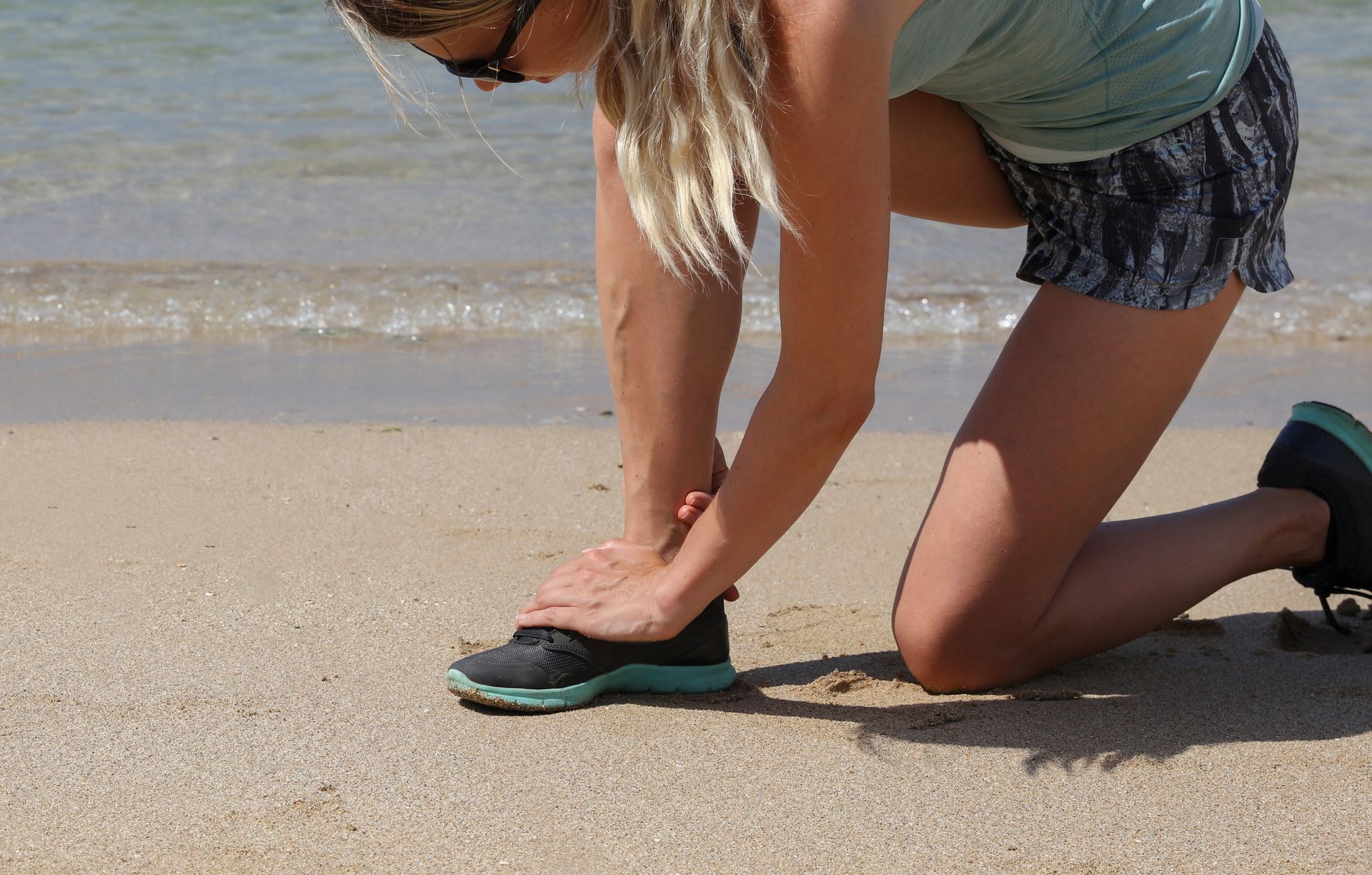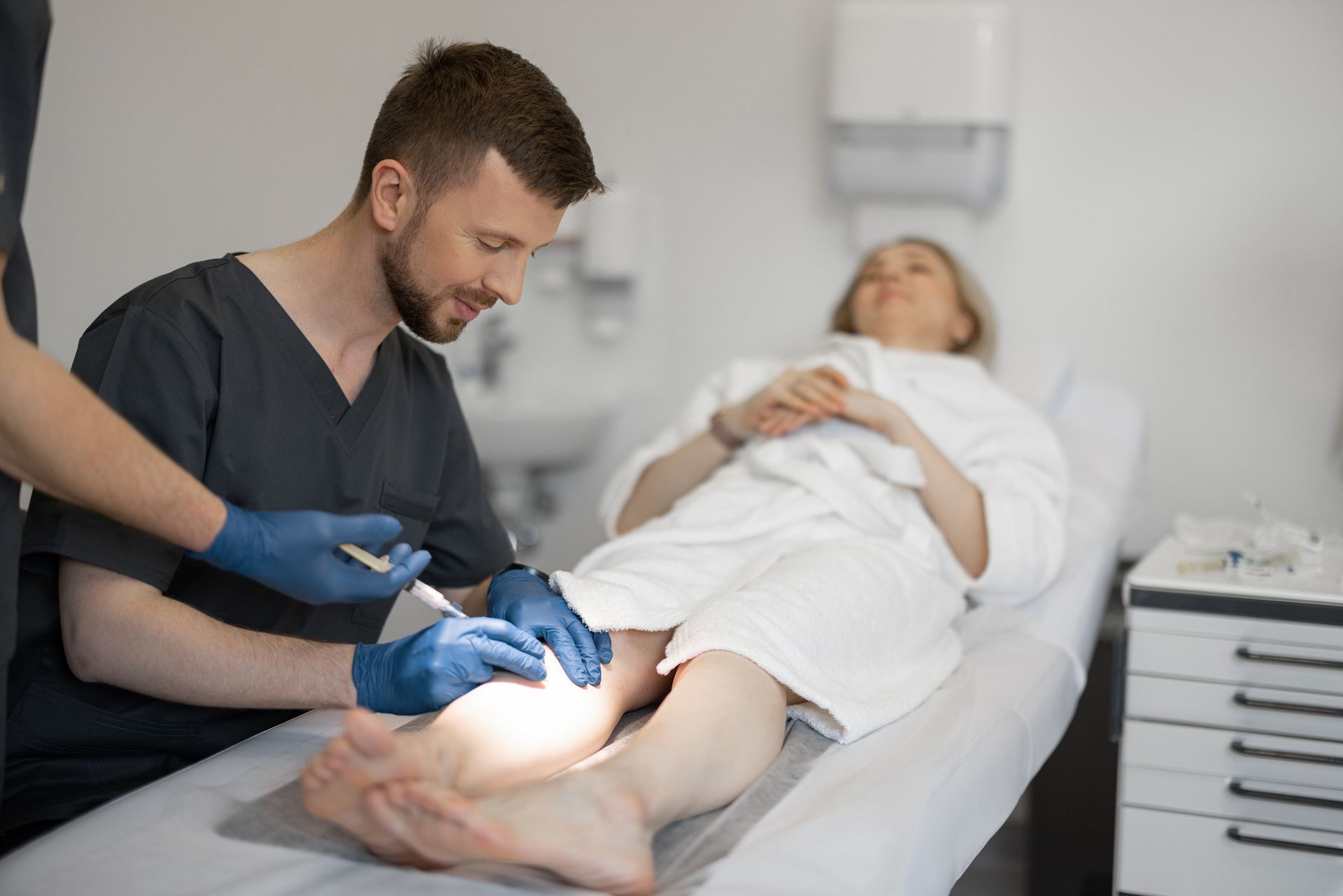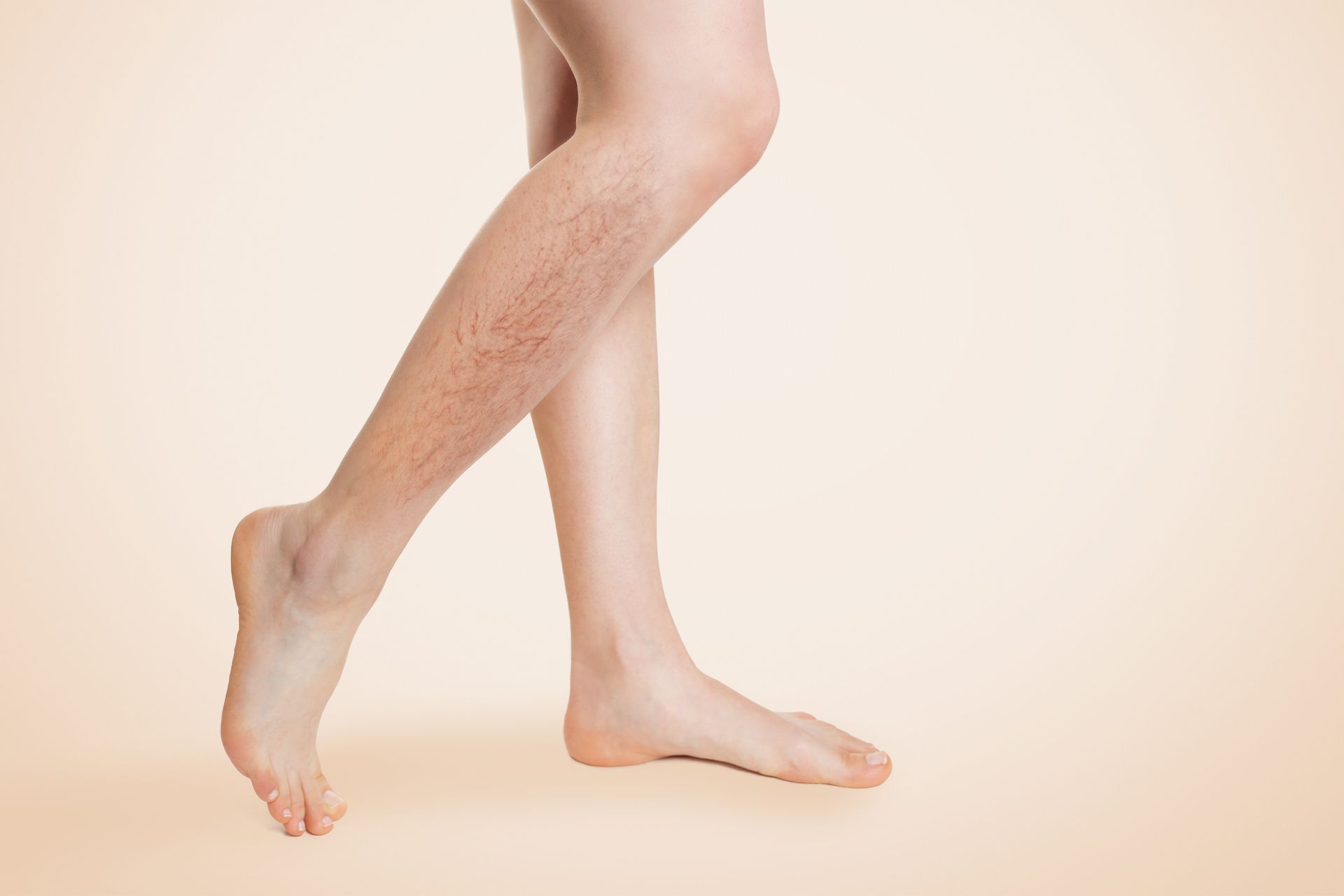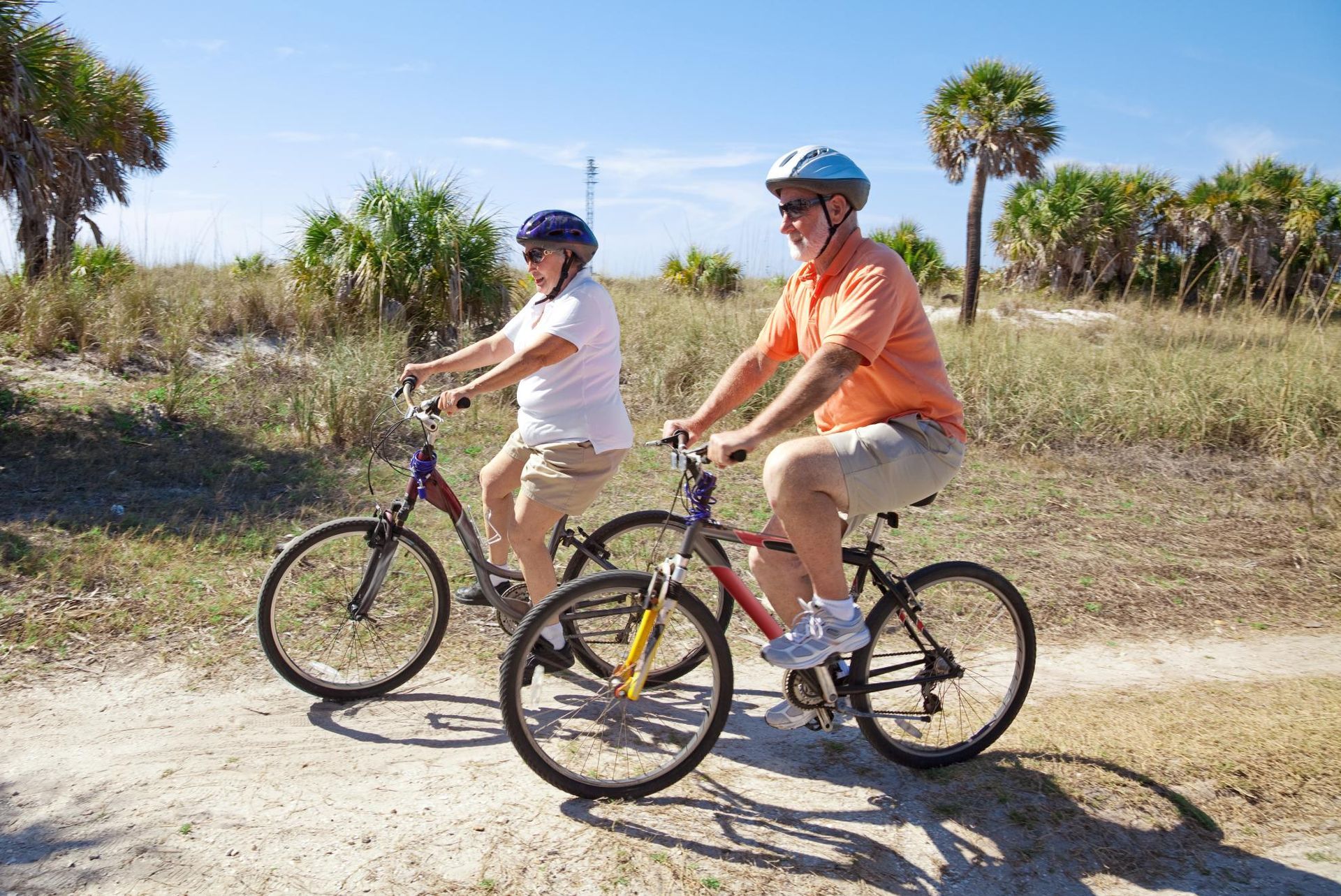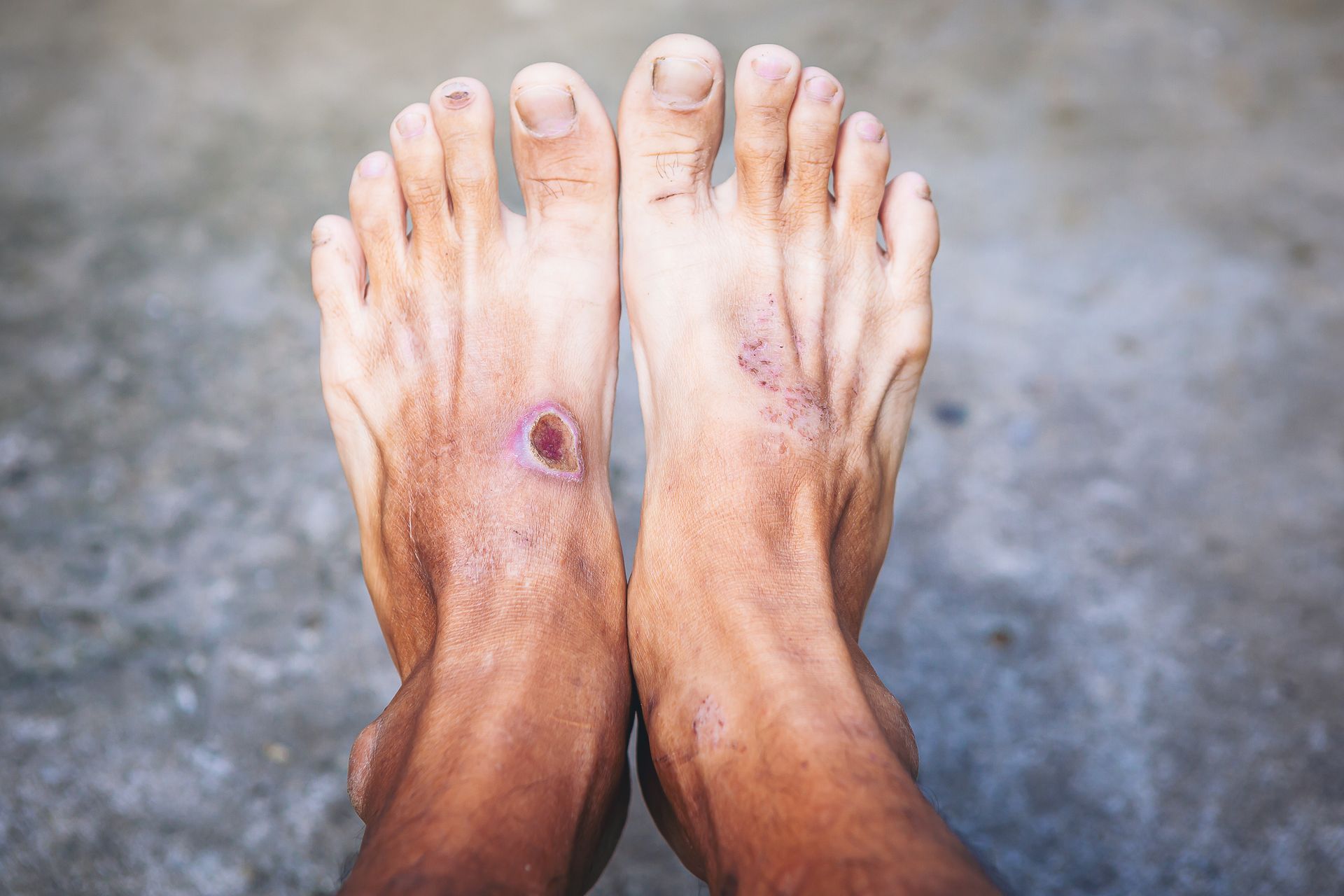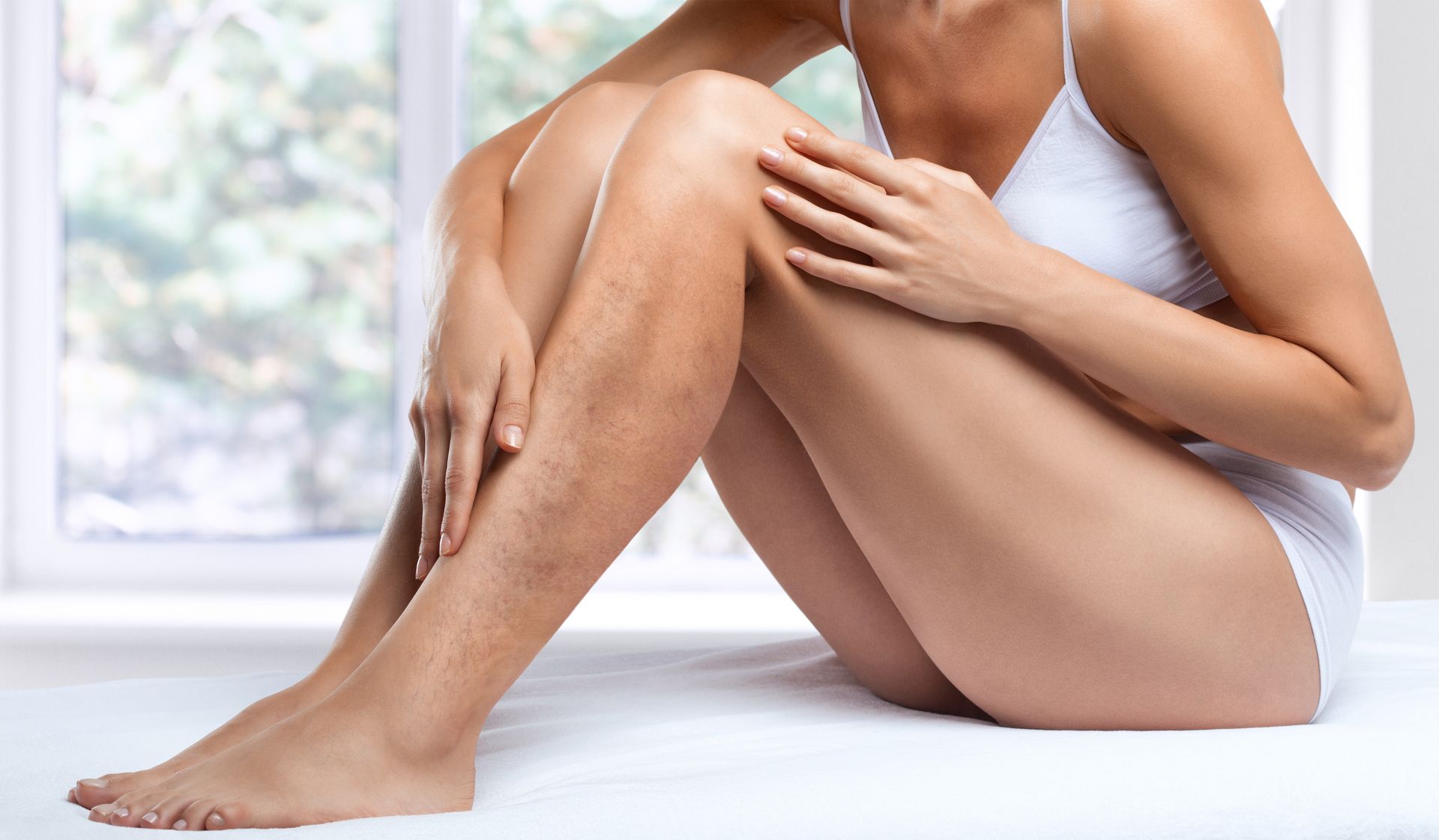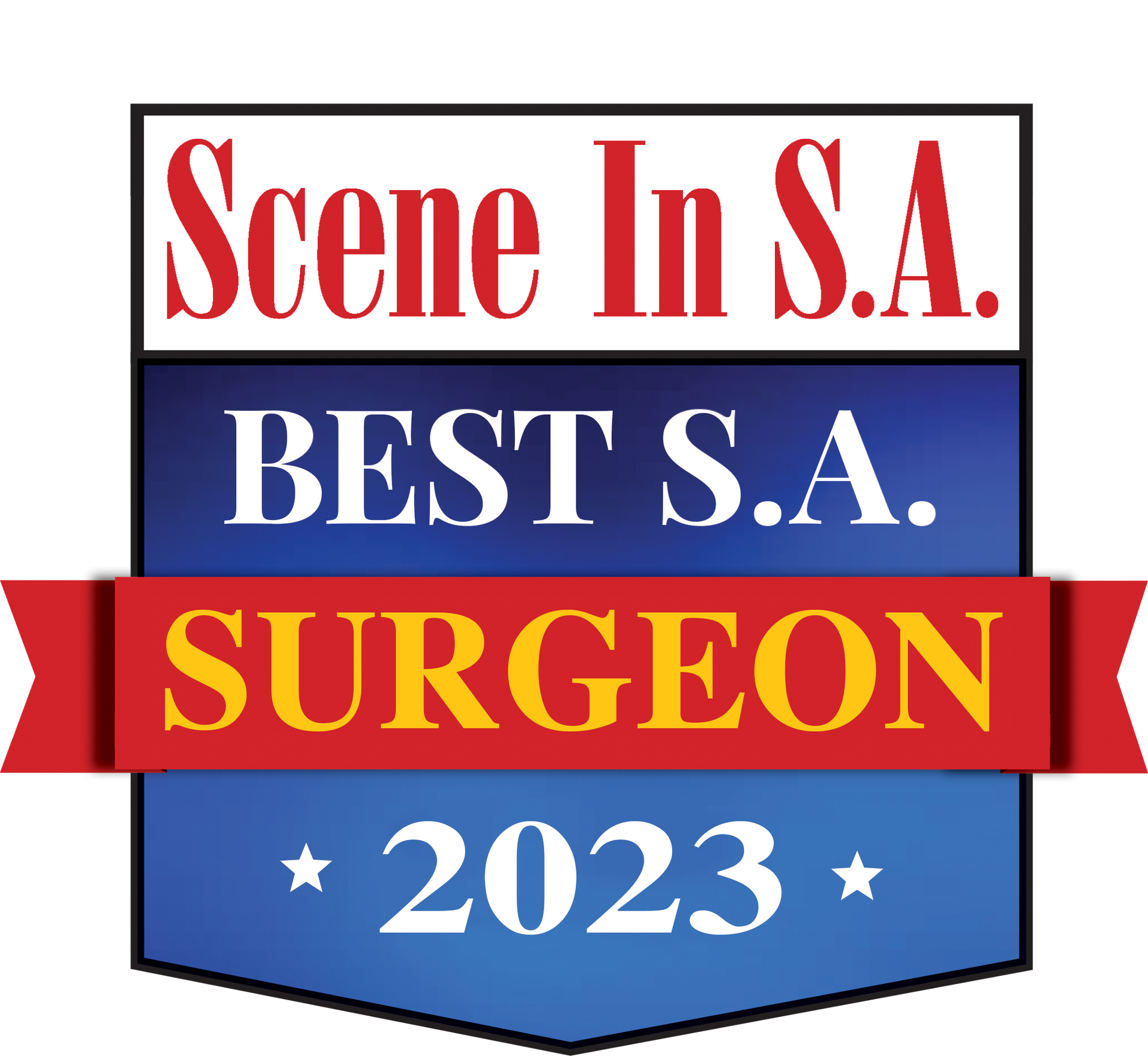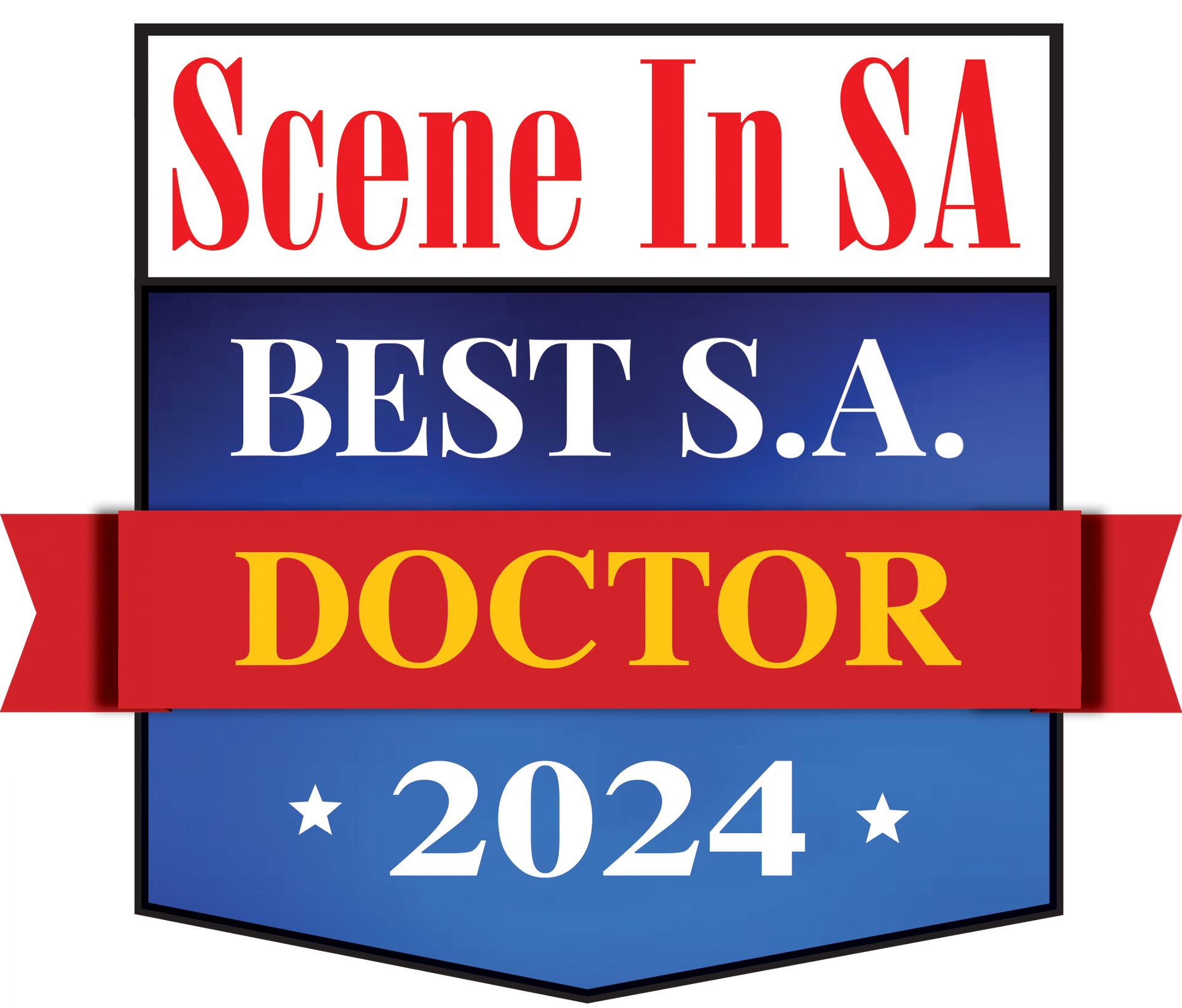What Causes Varicose Veins in the Legs?
Key Points
- Varicose veins are caused by weakened vein walls and faulty valves that allow blood to pool in leg veins
- Genetics is the strongest risk factor—up to 90% chance if both parents have varicose veins
- Hormonal changes during pregnancy, menopause, and birth control use significantly increase risk
- Age, prolonged standing, obesity, and lack of movement are major contributing factors
- Understanding your risk factors helps with early prevention and treatment
- The Vein Institute offers advanced, minimally invasive treatments in San Antonio and Boerne
If you've noticed those twisted, bulging veins appearing on your legs, you're probably wondering: "What exactly caused this to happen?" Varicose veins are more than just a cosmetic concern—they're often a sign of underlying venous insufficiency that affects millions of Americans. Understanding what causes varicose veins can help you better prevent them, recognize early warning signs, and know when to seek treatment.
At The Vein Institute, our board-certified specialist
Dr. Michael Sorace helps patients throughout San Antonio and Boerne understand their vein health and access the most advanced treatments available. Let's explore the complex factors that contribute to varicose vein development and what you can do about them.
Understanding How Varicose Veins Develop
Before getting into the specific causes, it helps to understand how varicose veins actually form. They develop when the walls of your veins become weak. As pressure builds up inside the vein, those weakened walls start to stretch. When that happens, the valves that normally keep blood flowing in one direction can’t do their job properly, causing blood to pool and the vein to swell.
The Normal Process: Veins in your legs have one-way valves that help move blood back up to your heart, even though gravity is pulling it down. These valves open to let blood flow upward and close to keep it from flowing backward.
What Goes Wrong: When these valves become weak or damaged, blood can flow backward and pool in your legs. The sluggish blood backs up or pools in your vein, causing your vein to swell, bulge and twist. This is what creates the characteristic rope-like appearance of varicose veins.
The #1 Cause: Genetics and Family History
Your family history plays a big role in whether or not you’ll develop varicose veins. If a close relative has them, there’s a strong chance you may, too. Heredity is one of the top risk factors.
The Numbers Don't Lie:
- If both of your parents have varicose veins, your risk of developing them is close to 90 percent
- More than half of women with varicose veins also have a parent who has them
- Researchers have found hundreds of genes and genetic markers linked to a higher risk of varicose veins
What You Inherit:
- Valve irregularities: Problems such as having too few valves or valves that are weak and don't function properly
- Vein wall conditions: Abnormalities of the vein wall that create weakness and predispose valves to separate and become leaky
- Connective tissue weakness: Hereditary conditions that affect connective tissue, a component of vein walls, can contribute to weakened veins
Important Note:
While genetics plays a major role, having a family history doesn't guarantee you'll develop varicose veins. Many other factors influence whether genetic predisposition becomes reality.
Hormonal Influences: Why Women Are at Higher Risk
Women are statistically more prone to develop varicose veins than men. This disparity is primarily attributed to hormonal changes throughout a woman's life.
Pregnancy: A Perfect Storm for Vein Problems
The occurrence of new varicosities in pregnancy may be as high as 28%. Pregnancy creates multiple challenges for your vascular system:
Increased Blood Volume: Your blood volume doubles to supply your baby with oxygen, putting significant strain on your veins.
Hormonal Changes: The hormones estrogen and progesterone can make the vein walls more flexible or less firm, which may lead to the development of varicose veins. These hormones tend to relax the walls of veins, making them more susceptible to stretching and valve malfunction.
Physical Pressure: There's an increase in blood volume to support the growing fetus, but the blood flow from the legs to the pelvis slows down. The expanding uterus puts direct pressure on the veins in your pelvis and legs.
The Good News: Spider veins that appear during pregnancy often fade after childbirth, but if a woman has multiple pregnancies close together, they’re more likely to become permanent.
Menopause and Hormone Replacement Therapy
As women go through menopause, levels of estrogen and progesterone drop sharply. When these hormone levels fall, vein valves can become weaker, making it harder for them to open and close properly. This can contribute to the development of varicose veins.
In some cases, doctors may recommend hormone replacement therapy (HRT) to restore some of the lost estrogen and progesterone. However, studies have found a link between HRT and an increased risk of varicose veins. In fact, newer research using machine learning has confirmed several known risk factors and uncovered new ones, including a stronger association with hormone therapy than previously thought.
Birth Control and Hormonal Medications
Other hormone-based medications, such as birth control pills or hormone therapy, can also play a role in the development of varicose veins. These medications can affect vein wall strength and valve function, though the risk varies among individuals.
Age: The Unavoidable Risk Factor
Age is the biggest risk factor for varicose veins—and it’s one we can’t avoid. As you age, several changes occur that increase your varicose vein risk:
Weakening Connective Tissues: As you age, the connective tissues in your veins get weaker. Your body also produces less collagen and elastin, the proteins that help keep those tissues strong and flexible, which leads to a decline in overall vein structure and function.
Valve Deterioration: The valves in the veins—responsible for ensuring blood flows in the right direction—experience wear and tear. As these valves weaken or get damaged, they can fail to prevent the backward flow of blood.
Reduced Activity: As we get older, we often become less active, which can increase the risk of circulation problems and varicose veins.
Gender Differences: Age and gender often go hand in hand when it comes to varicose vein risk. As women get older, their risk increases more sharply than it does for men, and they’re also more likely to experience noticeable symptoms. In fact, women over 65 have been found to have an 83% chance of developing varicose veins—about 28% higher than men in the same age group.
Lifestyle and Occupational Factors
Your daily activities and work environment can significantly impact your vein health.
Prolonged Standing or Sitting
Sitting or standing for long periods can slow down blood flow, especially in the legs. When blood pools in the lower body, it becomes harder for weakened veins to move it back up toward the heart. Over time, this can raise the risk of developing varicose veins.
Jobs with Higher Risk Include:
- Healthcare workers, such as nurses and surgeons
- Teachers and retail employees
- Hair stylists and beauticians
- Factory workers
- Office workers who spend most of the day sitting
In the Tampere study, 27% of individuals with sedentary working conditions had varicosities, whereas 36% of individuals with standing jobs had varicosities.
Physical Inactivity
Our circulatory system relies on regular movement to function optimally. Lack of exercise can cause CVI, too. So can sitting or standing for long stretches of time. When your leg muscles don't contract regularly, they can't help pump blood back to your heart effectively.
Weight and Body Composition
Carrying excess weight can exert additional pressure on the veins, particularly those in the legs. This increased pressure can weaken vein valves, leading to the formation or worsening of varicose veins.
How Obesity Affects Veins:
- Direct Pressure: Extra weight puts additional pressure on leg veins
- Inflammation: Carrying excess weight is connected to chronic, low-level inflammation throughout the body. This type of inflammation can interfere with how blood vessels function, slowing down circulation and raising the likelihood of developing varicose veins.
- Complications: If you’re obese and have varicose veins, you may be more likely to develop complications like ulcers—open sores on the skin that can result from poor circulation and are a serious concern in venous disease.
Interesting Gender Difference: Women with a body mass index (BMI) over 30 are more likely to develop varicose veins. In contrast, studies have not found a strong link between BMI and varicose veins in men.
Medical History and Previous Injuries
Certain medical conditions and past injuries can increase your risk of developing varicose veins.
Deep Vein Thrombosis (DVT)
Having a history of deep vein thrombosis, or a blood clot in a deep leg vein, can increase the risk of developing varicose veins. Blood clots can damage the valves and walls inside the vein, making it harder for blood to flow properly.
Post-Thrombotic Syndrome: This condition is a form of chronic venous insufficiency that can develop after DVT. Even after the clot has resolved, scar tissue may remain and interfere with vein function. Around 20 to 50 percent of people who experience DVT go on to develop post-thrombotic syndrome, typically within one to two years.
Previous Vein Damage
If veins are harmed, they may no longer be as strong as they've ever been; they can widen and become varicose veins. This can result from:
- Previous surgery
- Trauma or injury to the legs
- Infections
- Inflammatory conditions
Surprising New Risk Factors
Recent research using machine learning has uncovered some surprising contributors to varicose vein development.
Height
While it’s easy to assume that being taller increases varicose vein risk simply because blood has farther to travel, the real reason appears to be genetic. The same genes that influence height also seem to play a role in vein health. Even after accounting for other risk factors, taller individuals still showed a higher risk of varicose veins. If you're over 175 cm (about 5'9") as a man or 162 cm (about 5'4") as a woman, keeping an eye on your vein health is a smart move.
Education Level
The age at which someone completed full-time education—a marker for how many years they spent in school—also stood out as an important factor in the model. This matches findings from earlier studies, which suggest that education level may be tied to access to healthcare, job type, or other lifestyle-related factors that affect vein health.
Environmental and Secondary Causes
While most varicose veins are primary (meaning they develop on their own), some are secondary to other conditions.
Primary vs. Secondary Causes:
- Primary: Most common type, usually due to genetic predisposition combined with risk factors
- Secondary: Medical conditions, such as DVT, damage your leg veins
Other Contributing Factors:
- Chronic constipation (increases abdominal pressure)
- Tumors that increase abdominal pressure
- Arteriovenous shunting
- Certain medications
- Chronic cough
The Role of Chronic Venous Insufficiency
It's important to understand that varicose veins are often a visible sign of a deeper problem called chronic venous insufficiency (CVI). Chronic venous insufficiency happens when the valves in your leg veins don't work properly.
The Progressive Nature: CVI can affect all the types of veins in your legs:
- Deep veins (large veins found deep in your body)
- Superficial veins (close to your skin's surface)
- Perforating veins (connect deep and superficial veins)
Over time, CVI can cause pain, swelling, varicose veins, and skin changes in your legs. It may also lead to open sores called ulcers on your legs if left untreated.
When Multiple Causes Combine
Most people who develop varicose veins have multiple risk factors working together. For example:
- A woman with a family history of varicose veins
- Who becomes pregnant (hormones + increased blood volume)
- Works as a nurse (prolonged standing)
- And gains weight during pregnancy
This combination significantly increases the likelihood of developing varicose veins compared to having just one risk factor.
Understanding Your Personal Risk Profile
Knowing your risk factors helps you and your healthcare provider make informed decisions about prevention and treatment. Consider these questions:
Genetic Factors:
- Do your parents or siblings have varicose veins?
- Do you have any connective tissue disorders?
Hormonal Factors:
- Are you pregnant or planning pregnancy?
- Are you taking birth control pills or hormone replacement therapy?
- Are you going through menopause?
Lifestyle Factors:
- Does your job require prolonged standing or sitting?
- Do you exercise regularly?
- Are you carrying extra weight?
Medical History:
- Have you had a blood clot or DVT?
- Do you have any chronic medical conditions?
Prevention Strategies Based on Causes
Understanding what causes varicose veins helps inform prevention strategies:
For Genetic Predisposition:
- Start prevention early
- Monitor for early signs
- Consider compression stockings
- Maintain healthy weight and activity levels
For Hormonal Influences:
- Discuss risks with your doctor when considering hormonal medications
- Be extra vigilant during pregnancy
- Consider preventive measures during high-risk periods
For Occupational Risks:
- Take regular breaks to move and elevate legs
- Wear compression stockings if recommended
- Use ergonomic workstations when possible
For Weight Management:
- Maintain a healthy BMI
- Focus on anti-inflammatory diet
- Stay physically active
When to Seek Professional Evaluation
While understanding causes is important, recognizing when to seek professional help is crucial. Visit The Vein Institute if you experience:
- Visible varicose veins that are growing or changing
- Leg pain, aching, or heaviness
- Swelling in legs or ankles
- Skin changes or discoloration
- Any concerns about your vein health
The Bottom Line
Understanding what causes varicose veins empowers you to take proactive steps for your vein health. While genetics may load the gun, lifestyle factors often pull the trigger. The good news is that modern vein treatments are highly effective, minimally invasive, and can prevent complications while restoring healthy circulation.
Remember: It's important to remember that the primary cause of varicose veins is genetics. Factors like excess weight, age, pregnancy, and unhealthy lifestyle will typically just add to the risk. But while it's not strictly possible to eliminate your chances of getting varicose veins, taking healthy steps like becoming more active and taking breaks between long hours of sitting will minimise the risk.
FAQs About Varicose Vein Causes
Q: Are varicose veins always hereditary?
A: While genetics is the strongest risk factor, not all varicose veins are purely hereditary. Many factors contribute, including hormones, lifestyle, and medical history. However, if both parents have varicose veins, there's up to a 90% chance of developing them.
Q: Can men get varicose veins?
A: Yes, men can develop varicose veins, though women are more commonly affected due to hormonal factors. Men may develop varicose veins due to genetics, occupational factors, age, or lifestyle choices.
Q: Do varicose veins always get worse over time?
A: Varicose veins typically do not go away on their own and tend to worsen without treatment. However, early intervention and lifestyle modifications can slow progression and prevent complications.
Q: Can pregnancy varicose veins disappear after delivery?
A: Some varicose veins that develop during pregnancy may improve after delivery when hormones normalize and pressure decreases. However, if a woman has multiple pregnancies, the veins often become permanent.
Q: Does exercise cause or prevent varicose veins?
A: Regular exercise generally helps prevent varicose veins by improving circulation and muscle tone. However, certain high-impact activities might worsen existing varicose veins. Low-impact exercises like walking, swimming, and cycling are generally beneficial.
Q: Can sitting too much cause varicose veins?
A: Yes, prolonged sitting can contribute to varicose vein development by reducing blood circulation and allowing blood to pool in leg veins. Regular movement and leg elevation can help counteract these effects.
Q: Are varicose veins a sign of poor circulation?
A: Varicose veins often indicate venous insufficiency, which is a type of circulation problem where blood has difficulty returning from the legs to the heart. This is different from arterial circulation problems.
FAQs About The Vein Institute
Q: What makes Dr. Sorace qualified to treat varicose veins?
A: Dr. Michael Sorace is a board-certified vein specialist with fellowship training in skin surgery and extensive experience in diagnosing and treating venous disease. He specializes exclusively in vein treatments and uses the most advanced techniques available.
Q: Do you accept insurance for varicose vein treatment?
A: Yes, most vein procedures are covered by insurance when deemed medically necessary. Our billing specialists will verify your coverage and explain your options before treatment begins.
Q: How do I know if I need treatment for my varicose veins?
A: We offer free consultations to evaluate your specific vein concerns. During this visit, we'll assess your symptoms, examine your veins, and discuss whether treatment is recommended for your situation.
Q: What's the difference between your San Antonio and Boerne locations?
A: Both locations offer the same high-quality care and advanced treatments. Choose the location that's most convenient for you:
- San Antonio: 14530 NW Military Hwy, Suite 100, San Antonio, TX 78231 | (210) 236-9372
- Boerne: 745 West San Antonio Ave, Suite 100, Boerne, TX 78006 | (830) 331-9900
Q: Are your treatments painful?
A: Our minimally invasive treatments are performed under local anesthesia with minimal discomfort. We also offer Pro-Nox™ with specific procedures for additional comfort—a device that allows you to control your own pain and anxiety relief.
Q: How long do treatments take?
A: Most treatments can be completed in 15-30 minutes with no stitches or general anesthesia required. You can typically return to normal activities the same day.
Don't let varicose veins control your life. Understanding their causes is the first step toward effective treatment and prevention. Whether you're dealing with early-stage spider veins or more advanced varicose veins, The Vein Institute is here to help you achieve healthier, more comfortable legs.
Ready to take control of your vein health?
Contact The Vein Institute today to schedule your free consultation. We're conveniently located in San Antonio at
(210) 236-9372 and Boerne at
(830) 331-9900. Our experienced team will help you understand your specific risk factors and develop a personalized treatment plan that gets results.
Disclaimer: The information provided on this blog is for general informational purposes only and is not intended as, and should not be considered, medical advice. All information, content, and material available on this blog are for general informational purposes only. Readers are advised to consult with a qualified healthcare professional for medical advice, diagnosis, or treatment. The author and the blog disclaim any liability for the decisions you make based on the information provided. Always seek the advice of your physician or other qualified health provider with any questions you may have regarding a medical condition.
